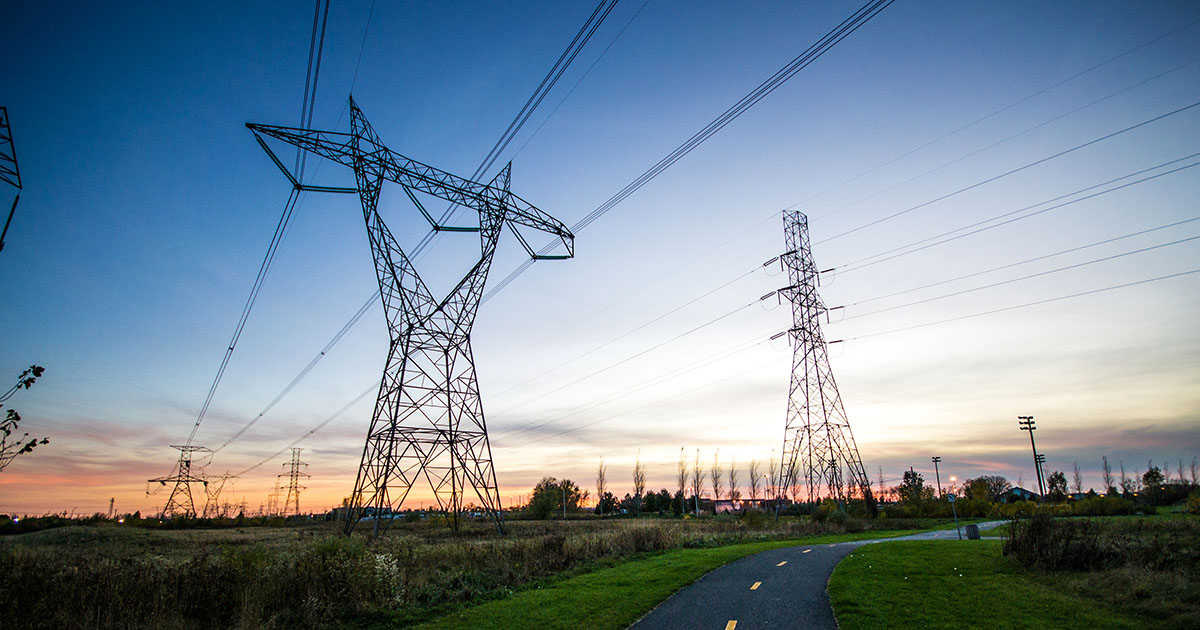Stakeholders of Transmission and Distribution (T&D) utilities are demanding more efficient and effective deployment of the capital dollars, while many of these utilities struggle to efficiently execute their capital plans. A Project Management Office (PMO) is a key element that can help T&D utilities address many of the traditional issues associated with capital delivery, while meeting the demands of stakeholders for more effective capital deployment.
This whitepaper outlines and identifies how a PMO can alleviate many traditional capital delivery issues through standardization, governance and reporting – as well as the steps you can take to implement or re-implement a high-functioning PMO.
Stakeholders demands
Regulators, customers, shareholders and capital markets are all demanding that T&D utilities utilize capital dollars more effectively:
- Regulators are moving away from the traditional rate base model, where utilities receive a set return on capital, to a performance-based model where the return on capital can increase or decrease, depending on how efficiently the capital plan was executed.
- Customers continue to demand a cost-effective, reliable electrical system.
- T&D utility shareholders want to maximize the return on capital in a performance-based rate environment.
- The ability to access the appropriate amount of low-cost capital requires the ability to accurately execute the capital plan, both cost and schedule.
The challenge for T&D utilities
Many T&D companies struggle to execute their annual and long-term capital plans effectively for many reasons:
- Inconsistent project management practices.
- A disconnect between asset planning and project execution.
- Inadequate reporting and forecasting of progress towards the plan.
- A legacy culture that is focused on getting the work done, as opposed to the cost of the project (historically increased costs simply become part of the rate base).
As a result of these challenges, annual capital spending targets are often met but for a smaller number of projects than were included in the plan and often with large amounts of overtime and third-party contractors, particularly in the last few months of the year. Reporting and forecasts that do not provide timely and accurate information regarding plan progress mean that it is difficult to make informed decisions in year. When capital plans are not met, the utility must then explain to the regulator why the plan was missed. Finally, these factors erode the confidence of the regulator, customers and shareholders in the ability of the company to execute its capital plans going forward.
Implementing a Project Management Office (PMO)
Many of the challenges associated with capital delivery in a T&D utility can be addressed with the implementation of a PMO. The PMO provides project execution with the standardization, governance, reporting and forecasting necessary to efficiently and effectively execute the capital plan.
The key elements required for a successful PMO are a clear mandate for the PMO; a capital delivery model; project and program stage gates; standardized project artifacts; accurate reporting and forecasting; a governance body that provides oversight; a feedback mechanism for lessons learned; and ongoing training and continuous improvement.
Define and communicate a clear mandate
The first step to successfully implement a PMO is to define a clear mandate for the department. This mandate outlines why the PMO department exists, key accountabilities and what the department is expected to deliver. As critical as the definition of the mandate is, the communication of the mandate to the rest of the organization is equally important. This communication starts the change management process and helps to prevent confusion surrounding the roles and responsibilities of the different stakeholders involved in developing and executing the capital plan.
Once the mandate has been identified and communicated, a governance body, an individual or a committee, must be established. This governance body provides oversight to the delivery of the capital plan and has the authority to progress projects.
Develop an effective capital delivery model
The next step is the development of a capital delivery model. This capital delivery model outlines how all projects and programs that fall under the PMO are executed. Each step of the model includes a list of required project artifacts and the associated level of detail. For the capital delivery model to be effective, all projects and programs delivered by the PMO must follow the model. If projects or programs are excepted, it leads to a lack of standardization as well as confusion about how projects and programs are delivered. All projects and programs must go through the model, but they are not all required to go through the model the same way.
Establish stage gates for governance
With the capital delivery model created, stage gates need to be established. These stage gates provide a control point for projects and programs as the project progresses. To move from one stage of the project to the next, approval must be received. The move to the next stage can be approved, rejected or there could be a conditional approval provided. This approval requirement provides a level of governance and allows the organization to make decisions about projects based on potential changes or new information received.
Another important function of stage gates is to provide different paths through the capital delivery model based on the risk and complexity of the project or program. Large complex projects will likely need to get approval at each stage gate, whereas low-risk programs, such as pole replacement, may only need to go through two or three of the gates, reflective of their risk profile. The capital delivery model and stage gates accommodate different types of projects without taking a one-size-fits-all approach.
Standardize project artifacts
Establishing standardized project artifacts allows the project approval body to understand key information related to the project without trying to interpret the documents based on who the project manager is. This standardization means that the information presented at each stage of the project conveys the same information at the same level of detail and to the same standard. This creates efficiency for the approval body and removes confusion for the project managers. Key standard project artifacts include scope, project plan, estimate, schedule, budget performance and risk register.
Standardization of project artifacts also provides the data and uniformity required to develop effective reports and forecasts at the portfolio, program and project levels. This reporting allows the organization to understand progress toward the plan as the year progresses and allows adjustments and changes to be made, as circumstances require, based on data and information. This reporting and forecasting is a key component for resource scheduling, which will help to adjust and smooth resourcing requirements which aids in avoiding a rush to complete projects at the end of the year, minimizing additional overtime and third-party contractors.
Develop a continuous improvement program
Once the agreed upon standard project artifacts have been created and implemented, the PMO must develop and implement a training and continuous improvement program, including capturing lessons learned from completed projects. This training and continuous improvement program should apply to all personnel involved with capital delivery and will reinforce standardization, assist with onboarding of new people and will facilitate the adoption of leading practices.
Following these steps will reduce variability in project execution, provide visibility to the execution of the capital plan, and will give the business the information required to make informed decisions when there are changes.
In closing
Efficient capital delivery is becoming increasingly more important for T&D companies because of regulatory changes, increased customer pressure and the demands of shareholders and capital markets. Implementing a PMO will provide the oversight and standardization required to consistently achieve the capital delivery scope, schedule and cost performance increasingly being demanded by stakeholders.
If your capital project performance is not performing at the level that you would like, implementing, or re-implementing a PMO will provide tangible improvements to the delivery of the capital plan.
Please contact the MNP Energy & Utilities Team to learn more about how MNP is helping T&D companies execute their capital plans.






